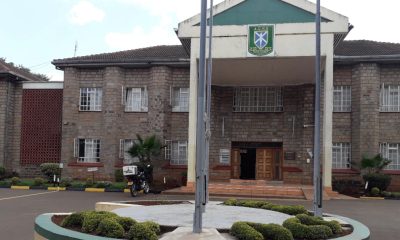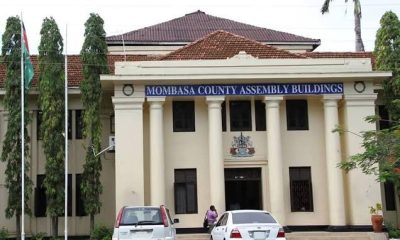A report by the Ethics and Anti-Corruption Commission (EACC) has laid bare how government officials siphoned money from the EduAfya Scheme.
The anti-graft agency released the findings following an examination of systems, policies, procedures and practices of work at the National Hospital Insurance Fund (NHIF).
Ministry of Education in partnership with NHIF rolled out a comprehensive medical insurance cover for learners enrolled in all public secondary schools in May 2018 which was dubbed Edu Afya.
The scheme covered all children in public secondary schools in Kenya.
Through the cover, the government paid a premium of Sh1,350 per student.
In the report, EACC said there were instances of induced demand where some Health Care Professions (HCPs) organised transport to pick up the students from their schools.
“Further, some HCPs held outreach activities in schools to induce demand,” the report stated.
It added that some private HCPs did not issue students with records such as invoices for services provided.
“This creates avenues for falsified claims,” the document noted.
NHIF received Sh9.5 billion from the government in four years under the EduAfya between 2019 and 2022.
The programme included outpatient and inpatient services, day surgical services, local road ambulance and emergency air rescue services.
The report further noted that the list of beneficiaries submitted to the Ministry of Education showed data for both capitated and fixed fees for services (FFS) beneficiaries.
It said the list misrepresented the scheme returns and indicates inaccurate or compromised data.
“For example; an Edu-Afya report of 701 beneficiaries generated for HCP code 7779124 had 184 FFS beneficiaries with a claim of Sh175,300,” the report cited.
It further cited an Edu-Afya report generated for HCP code 77798602 which had 12 beneficiaries aged between 26 and 57 years.
The report further revealed that some students lacked Unified Personal Identification (UPI) numbers.
“This made it difficult to access benefits, prompting their parents to incur out-of-pocket expenses.”
Instances of double registration for some EduAfya members were also cited in the report.
The document further revealed that concurrent outpatient and rebate claims were processed and paid for some EduAfya beneficiaries also covered as dependents under the National Health Insurance Scheme.
EACC added that there were cases where a student would visit a facility more than 10 times in a month.
“These weaknesses indicate weak controls in the registration of beneficiaries and administration of Edu Afya Scheme leading to loss and misappropriation of funds,” the commission said.
EACC recommended sanctioning errant HCPs and a clean-up of Edu-Afya data to enhance data integrity and accuracy in reporting.
It also recommended that the Ministry of Education moves to ensure that all students are issued with Unified Personal Identification numbers.
Kenya Insights allows guest blogging, if you want to be published on Kenya’s most authoritative and accurate blog, have an expose, news TIPS, story angles, human interest stories, drop us an email on [email protected] or via Telegram

 Investigations2 weeks ago
Investigations2 weeks ago
 Investigations2 weeks ago
Investigations2 weeks ago
 Investigations2 weeks ago
Investigations2 weeks ago
 Investigations1 day ago
Investigations1 day ago
 Investigations2 weeks ago
Investigations2 weeks ago
 Investigations2 weeks ago
Investigations2 weeks ago
 Investigations2 weeks ago
Investigations2 weeks ago
 Business1 week ago
Business1 week ago















